
detail from the beethoven frieze by klimt Klimt art, Gustav klimt art, Klimt paintings
Gustav Klimt, Portrait of Adele Bloch-Bauer I, 1903-1907, Neue Galerie, New York, USA. This is how the masterpieces of Gustav Klimt's "golden period" can be described. Klimt turned to the use of gold in his artworks for several reasons. Firstly, he was familiar with the technology of gilding from early childhood.
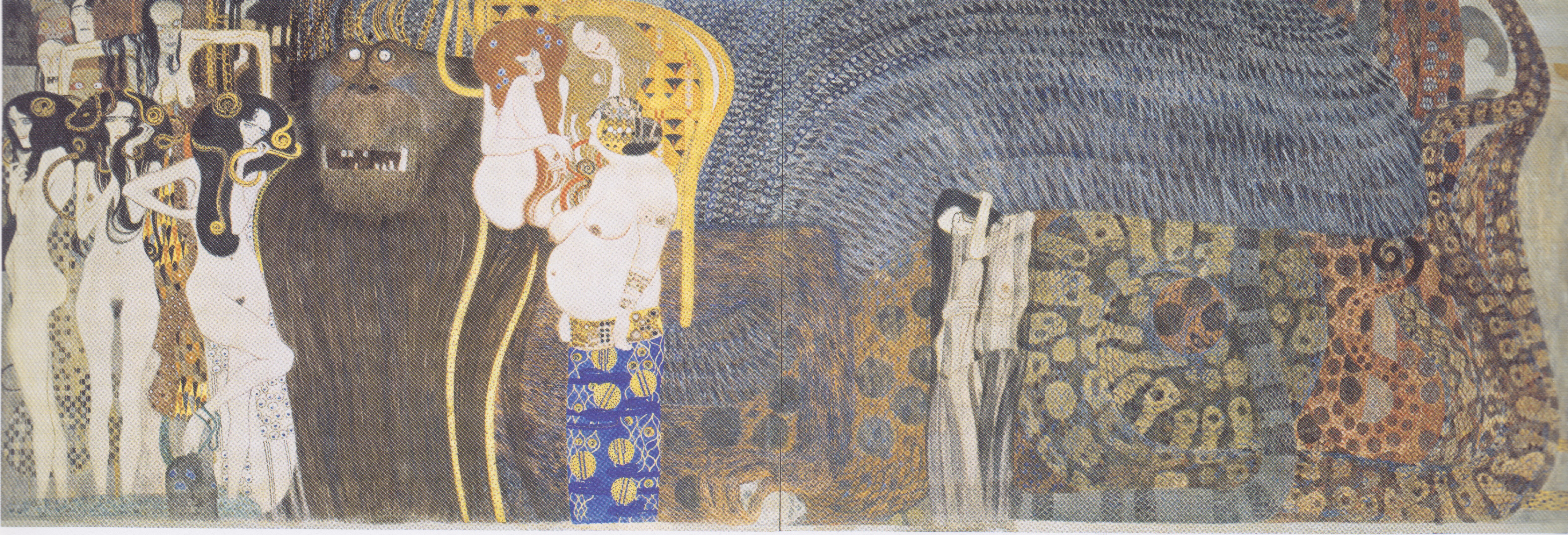
The Beethoven Frieze The Hostile Powers. Far Wall Gustav Klimt encyclopedia
Description. In 1902, Klimt painted the Beethoven Frieze for the Fourteenth Vienna Secession exhibition in celebration of 75th anniversary of the composer Ludwig van Beethoven's death. It was featured alongside a monumental polychrome sculpture by Max Klinger.Meant for the exhibition only, the frieze was painted directly on the walls with light materials.
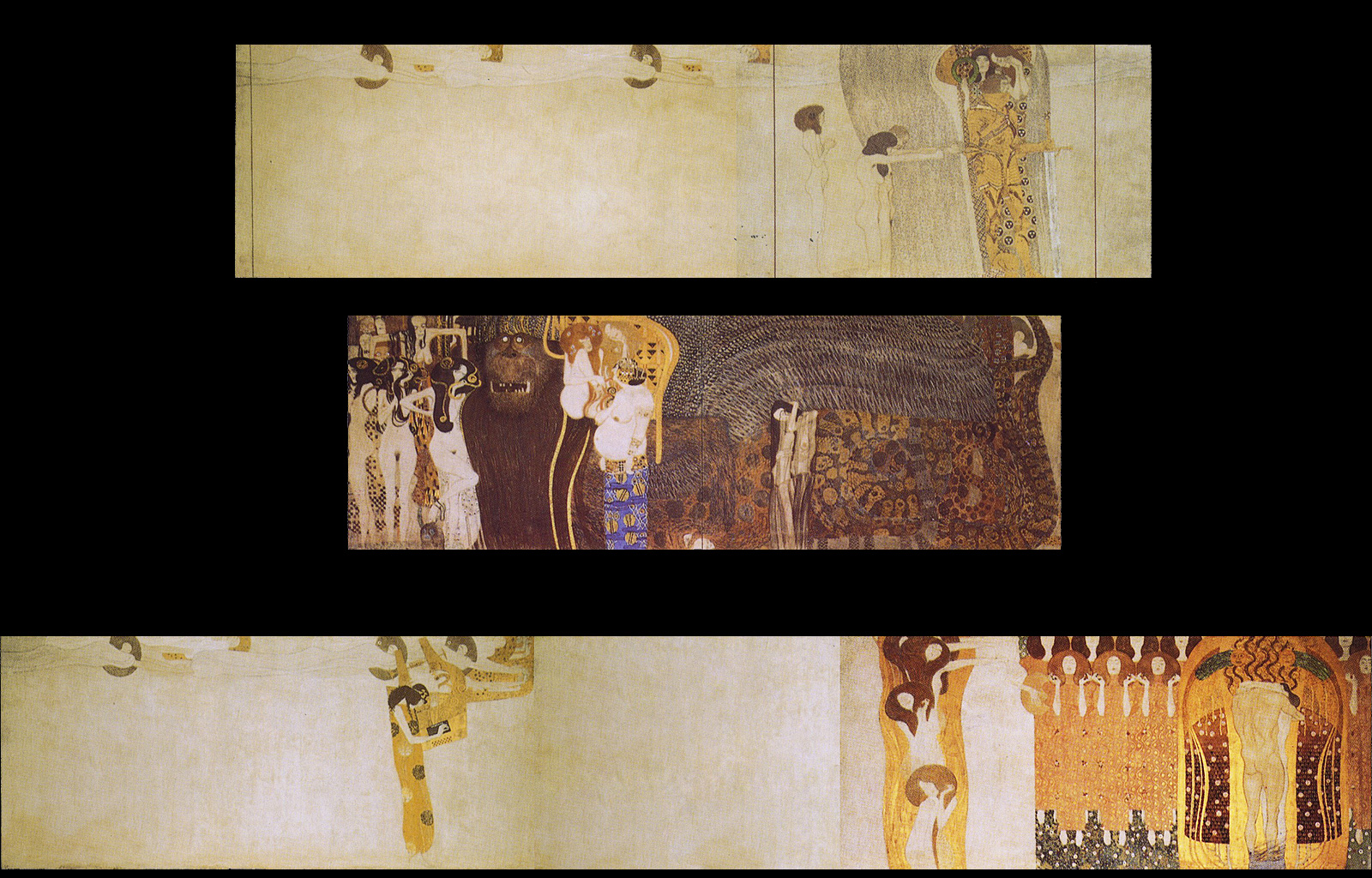
Gustav Klimt Beethoven Frieze (1902) r/museum
The Beethoven Frieze Program Gustav Klimt provided the most significant contribution to the Beethoven exhibition with a wall frieze that was over 112 feet long and extended over three walls of a side hall of the Secession. The frieze depicts a monumental allegory and is considered to be one of Klimt's key works.
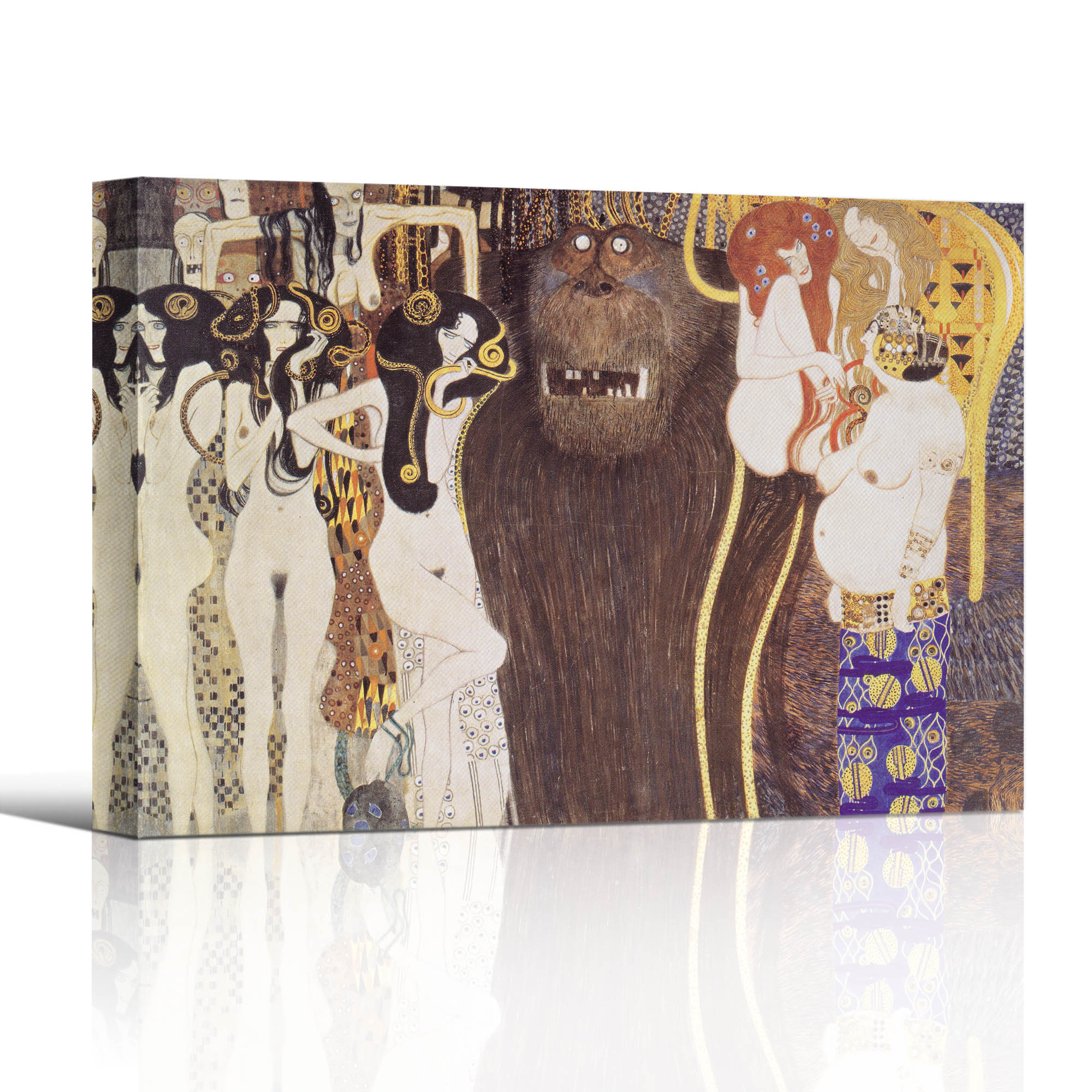
Beethoven Frieze by Gustav Klimt Canvas Art
Klimt: The Immersive Experience is all digital, hands free, and perfect for our socially distant world. Its rich content is suitable for a wide audience, including families, school groups, couples, and seniors. In addition to a spacious central area where Klimt's works stretch floor-to-ceiling, the experience includes separate galleries that chronicle his life, technique, and influence.

Beethoven Frieze by Gustav Klimt painted in 1902 in homage to Stock Photo, Royalty Free Image
The Secession Museum is a true gem of Jugendstil design from fin-de-siècle Vienna. It's famous for its exquisitely gilded Beethoven Frieze by Gustav Klimt. This remarkable structure once served as the headquarters of the Secession Movement artists. They were a pioneering group that fearlessly embraced modernism and rebelled against the.

In 1902, Klimt created one of his most famous works, the Beethoven Frieze in 2020 Klimt
Gustav Klimt created the famous Beethoven Frieze for the XIVth exhibition of the Association of Visual Artists Vienna Secession, which was held between April 15 and June 27, 1902.Conceived as a tribute to the composer Ludwig van Beethoven, the presentation epitomized the Secessionists' vision of an encompassing synthesis of the arts.

Knight, Beethoven Frieze Painting by Gustav Klimt Fine Art America
Measuring 34 meters in length, this mural by Gustav Klimt draws its main theme from Ludwig van Beethoven's Ninth Symphony. Its composition and the story it tells have always inspired artists and poets, but have also sparked numerous controversies. The Beethoven Frieze was installed in 1902 in the left nave (Hauptraum) of the Palais de la.
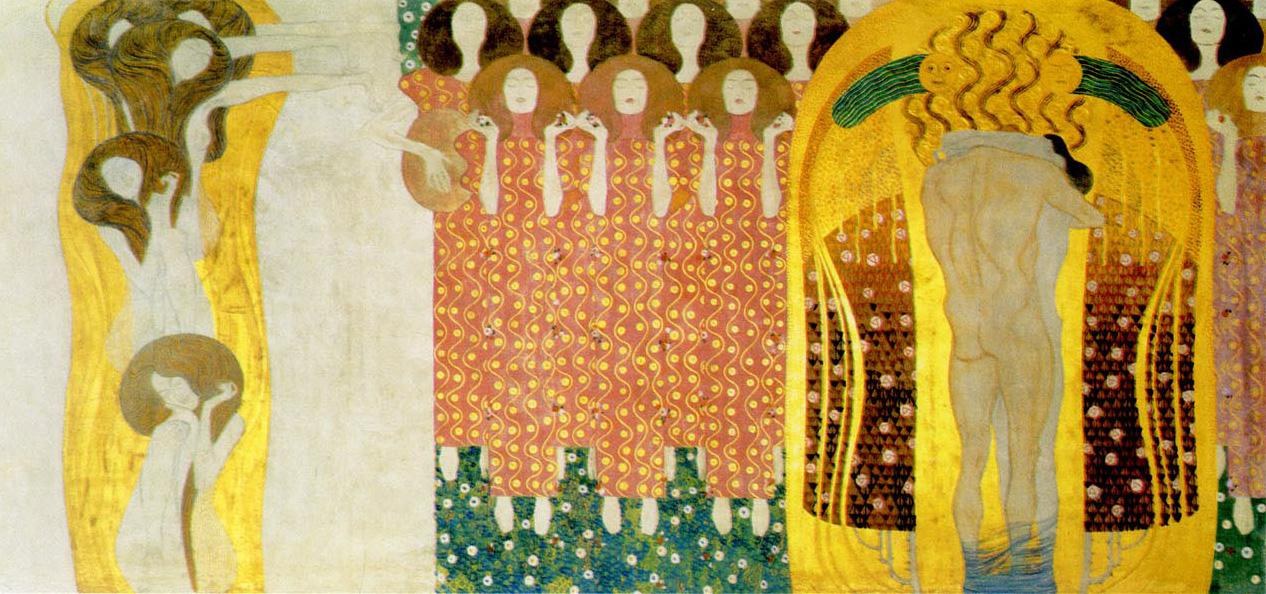
Gustav Klimt Entirety of Beethoven Frieze left8 Painting Best Paintings For Sale
In 1902, Klimt created one of his most famous works, the Beethoven Frieze, for an exhibition of the Secession movement. The entire show was an homage to Ludwig van Beethoven. Klimt's monumental frieze greeted visitors in the entrance hall. Thirty-four meters wide and two meters high is this opulent, ornamental "symphony"; in which Klimt.

The third panel of Klimt's Beethoven frieze in the Wiener Sezession building, Vienna
The Beethoven Frieze, created in 1902 by Gustav Klimt for the Vienna Secessionist exhibition, is a monumental work of art covering three walls with dimensions of 2.15 x 34.13 meters. The frieze was intended as a celebration of Beethoven and featured a polychrome sculpture by Max Klinger. It was designed for exhibition purposes only and painted.

The Beethoven Frieze The Longing for Happiness Finds Repose in Poetry. Right wall, detail, 1902
Gustav Klimt, Beethoven Frieze, 1901-1902 Loan at the Secession, Vienna, © Belvedere, Vienna

Beethoven Frieze print by Gustav Klimt Posterlounge
Klimt focused on the theme of the erotic, provocative group "The Three Gorgons" in numerous studies. A slim, stylized standing figure with dark, wild locks embodies the seductive image of the femme fatale. She dominates with sensually flowing lines. Standing Female Nude (Study for "The Three Gorgons" of the "Beethoven Frieze") (1901) by Gustav.

Heirs Press Austria to Return Looted Klimt Frieze The New York Times
The Beethoven Frieze. Gustav Klimt 1901. Secession. Vienna, Austria. The theme of the frieze is based on Richard Wagner's interpretation of Beethoven's Ninth Symphony. The three painted walls, beginning with the lateral wall on the left, lay out a cohesive narrative of man's quest for happiness.
.jpg)
Beethoven Frieze by Gustav Klimt Buy fine art print
Gustav Klimt, Beethoven Frieze. Gustav Klimt, Beethoven Frieze. by Dr. Steven Zucker and Dr. Beth Harris. Gustav Klimt, Beethoven Frieze, 1902, Vienna Secession Hall. The heirs of the Austrian Jewish collector who owned this work before World War II lost their case to recover it in 2015. Learn more in the March 7, 2015 New York Times article.
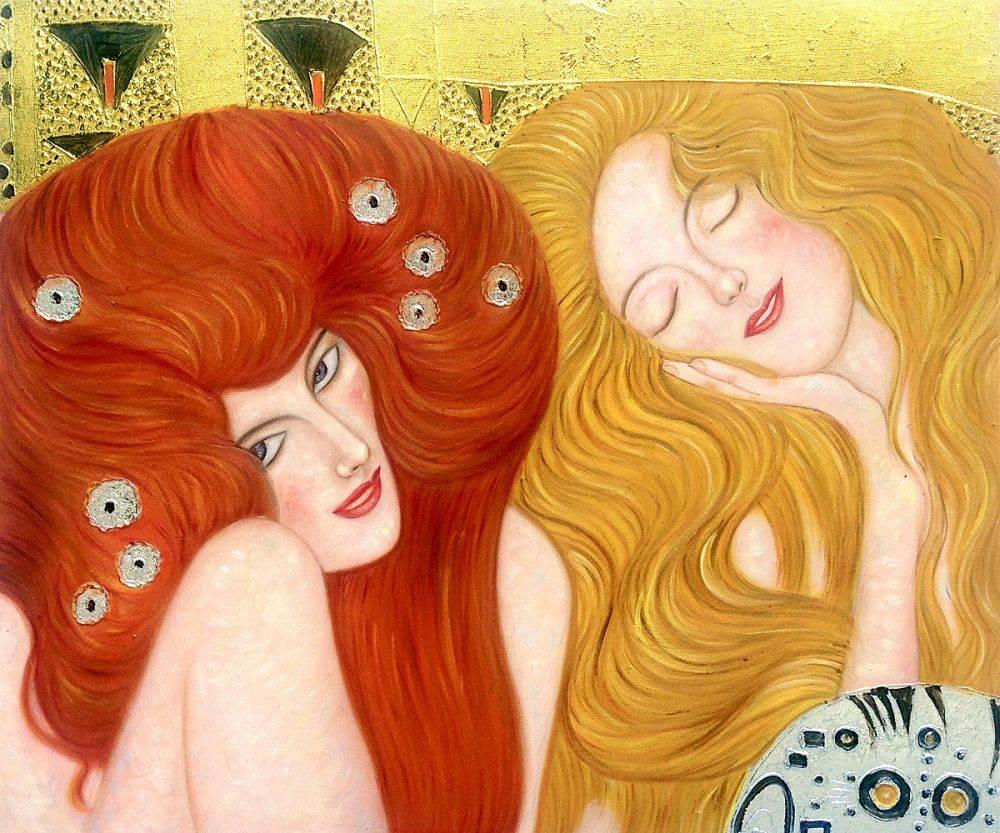
Gustav Klimt, Beethoven Frieze (detail Luxury Line) Hand Painted Oil Painting on Canvas
In 1901-2 Klimt worked on a groundbreaking decorative cycle, the Beethoven Frieze, which was displayed in the Secession building, where it still is today.It was a painted interpretation of one of the greatest musical compositions ever written, the final choral movement of Ludwig van Beethoven's Ninth Symphony (1824).
+1902.jpg)
Mundo além das palavras Gustav Klimt 18621918 O Friso de Beethoven
Beethoven Frieze: "The Arts", "Paradise Choir" and "The Embracement" (Panel 9, right sidewall) Gustav Klimt 1901. Secession Vienna, Austria. The frieze takes its theme from Richard Wagner's interpretation of Beethoven's Ninth Symphony and depicts humankind's search for happiness. In the final scene, female figures symbolizing the arts.
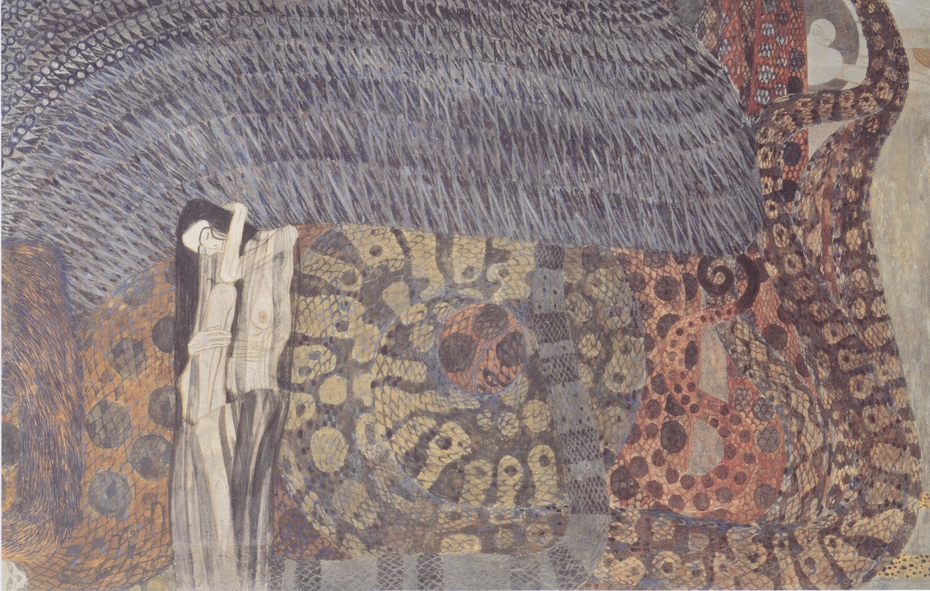
"Beethoven Frieze (plate 6, center wall) The Hostile Powers" Gustav Klimt Artwork on USEUM
Beethoven Frieze, 1902 by Gustav Klimt. Beethoven Frieze was painted by Klimt in 1902 for the 14th Vienna Secessionist exhibition, which was intended to be a celebration of the composer and featured a monumental polychrome sculpture by Max Klinger. Meant for the exhibition only, the frieze was painted directly on the walls with light materials.
